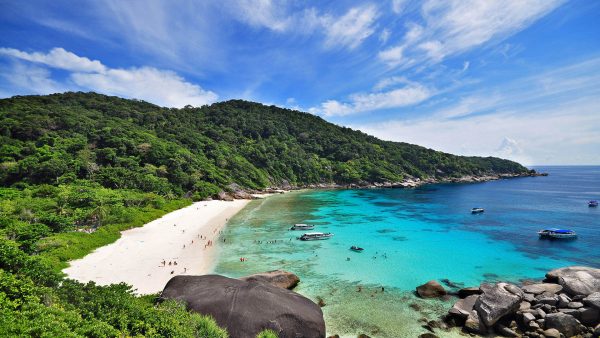CHIANG RAI, 15 March 2019: A Supreme Administrative Court ruling opens the way for Thailand’s Department of National Parks, Wildlife and Conservation to limit tourist and dive visits to the Similan Islands in the Andaman Sea.
It also sends a clear message to local tour operators and travel companies to think twice before objecting to measures that will protect islands from ‘overtourism.’
Following on from the closure of Maya Bay in the Phi Phi islands, last year, the department of national parks issued a ruling designed to cap the footfall on Similan Islands at 3,325 visitors and 525 divers daily.

But local tour operators, predictably looking only at their wallets, filed an injunction with the Phuket Administrative Court to overturn the ruling. That manoeuvre allowed them to continue selling tours to the islands through the peak season. During the boom year 2017, the Similans was overrun with around 5,000 visitors daily, but due to a 4% drop in tourist arrivals to Phuket in December 2018 visits to the Similans dropped significantly.
The supreme court ruling sets the record straight on the department’s authority to cap visits to islands under its supervision, while admonishing tour operators for an abject failure to address the risks and potential damage tourism can inflict on an island’s environment. The court ruled “tour operators” had failed to deliver a valid argument for opposing the capacity cap.
Predictably, tour operators object whenever their commercial enterprises are at risk even though the islands they exploit for gain are national assets and not private property. Instead of being part of the solution they demand the status quo continues to offer them unhindered access to islands even though it results in catastrophic consequences for the marine environment.
Capacity caps have to be set at all island attractions and in some instances islands should be closed permanently to sightseeing endeavours.
Of course, this does not apply to commercially developed tourist islands such as Chang, Lanta Phuket and Samui but there are still thousands of islands that need to be declared off-limits for commercial tourism.
Maya Bay is a fine example of what can be achieved to restore the environment of a bay when closed to tourists for a prolonged period.
The tourism industry has to come to terms with the reality that islands need protection. Development has to be measured by a community’s ability to achieve balance between earning a living and protecting an asset for future generations to enjoy.
To achieve balance, Thailand’s natural assets and the clusters of islands that remain unspoilt should be protected from ‘overtourism’ through serious year-round capacity caps. The brakes need to be applied firmly and the industry needs to recognise that there are enough beach resorts and islands packed with hotels to serve tourist needs for decades to come. A different tourism model needs to be adopted one that helps local communities thrive while ensuring mega projects more suited to urban centres are not approved for beaches and islands.






